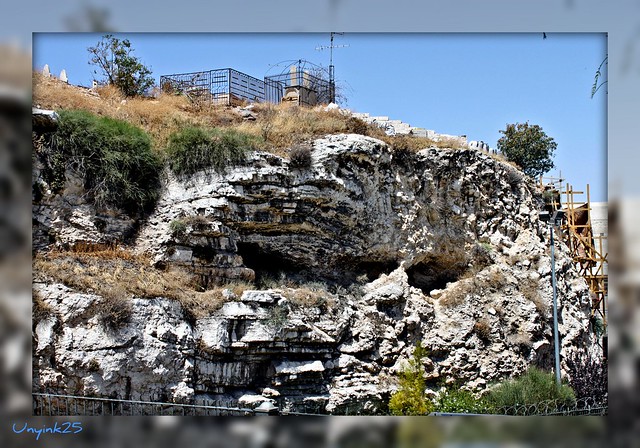Matthew 27: 38-44.”Then were there two thieves crucified with Him, one on the right hand, and another on the left. And they that passed by reviled Him, wagging their heads, And saying, Thou that destroyest the temple, and buildest it in three days, save Thyself. If thou be the Son of God, come down from the cross. Likewise also the chief priests mocking Him, with the scribes and elders, said, He saved others; Himself He cannot save. If He be the King of Israel, let Him now come down from the cross, and we will believe Him. He trusted in God: let Him deliver Him now, if He will have Him: for He said, I am the Son of God. The thieves also, which were crucified with Him, cast the same in His teeth.”

Crucifixion was not a neat and tidy experience. Very few paintings depict the reality. Isaiah 53 tells us that “there was no form nor comeliness” left to the face and body of Jesus by the time He was on the cross. One could hardly tell that He was a man, He had been so severely scourged, His face and body destroyed by the brutality of the treatment He’d received at the hands of the Jews and the Romans.
This painting, however, is realistic in the proximity of the people to those who suffered on their crosses. We know there were at least two who were crucified with Him, but there could have been more. It was common practice for Rome to make crucifixion as big a spectacle as possible, hoping to terrorize people into accepting Roman rule without a struggle.
There were probably a lot of people who passed by the grisly scene. Some were just looky-loos, people who had nothing better to do and were curious what all the fuss was about. Others were there out of duty: The team of Roman soldiers whose task it had been to nail Him to the cross, and then raise the cross and drop it into the prepared hole. That process, by the was, was horribly painful for Jesus. His lacerated back rubbed against the rough wood, and His joints were pulled out of place by the weight of His body as the cross thudded into place.
The chief priests and elders were there, milling around and mocking Jesus Christ, making fun of Him and blaspheming Him in His suffering. Others who had loved and followed Him were there, but not many; at least, not many who were willing to be identifed. We know from other accounts that His mother was there, with the Apostle John,
Women, have you ever thought about that? Mary stood and watched as her Son suffered through the last several hours of His life on earth. She stood near enough to the cross to hear His voice; to see his awful wounds, to know how much He suffered. I wonder if she didn’t just sink to the ground at some point, dying inside for the suffering of her Son. The tears must have poured from her eyes in a steady stream as she watched Him there.
I have three sons and a daughter of my own. To watch any one of them endure such hideous, unjust suffering would just about kill me. I think I would be wanting to die myself. I’ve often wondered how Mary could stand, it, being there, hearing, seeing, feeling the great pain and suffering that her Son was enduring. Hearing the wicked mockery of those who stood by, and even the mockery of the others who were crucified with Him.
What was she thinking? Did she understand that this was what He came to do? Did she know He would rise again?
And someone else was there, someone who was probably invisible to all but Jesus Himself. Satan was there, gloating, laughing, doing a victory dance. Finally, finally! The Son of God was suffering, and He would soon die.
But Satan’s victory dance was short-lived, as I believe he knew it would be. He had worked hard to keep Jesus from the cross, trying to take His life before He could accomplish the prophecies and fulfill the will of the Father.
Even though it seemed Satan was winning, he was losing. He had bitten Jesus’ heel, but Jesus was crushing his ugly head.



 something which I fear is becoming a part of the American past. We talked about faith, politics, history, relationships, dating, just about everything. It was good. We spoke, they listened. They spoke, we listened. They have all told us that they are thankful for our teaching them to think criticially, not to be duped by every silly fad or fantasy; to be able to defend what they believe because they believe it, not because someone else believes it.
something which I fear is becoming a part of the American past. We talked about faith, politics, history, relationships, dating, just about everything. It was good. We spoke, they listened. They spoke, we listened. They have all told us that they are thankful for our teaching them to think criticially, not to be duped by every silly fad or fantasy; to be able to defend what they believe because they believe it, not because someone else believes it.





